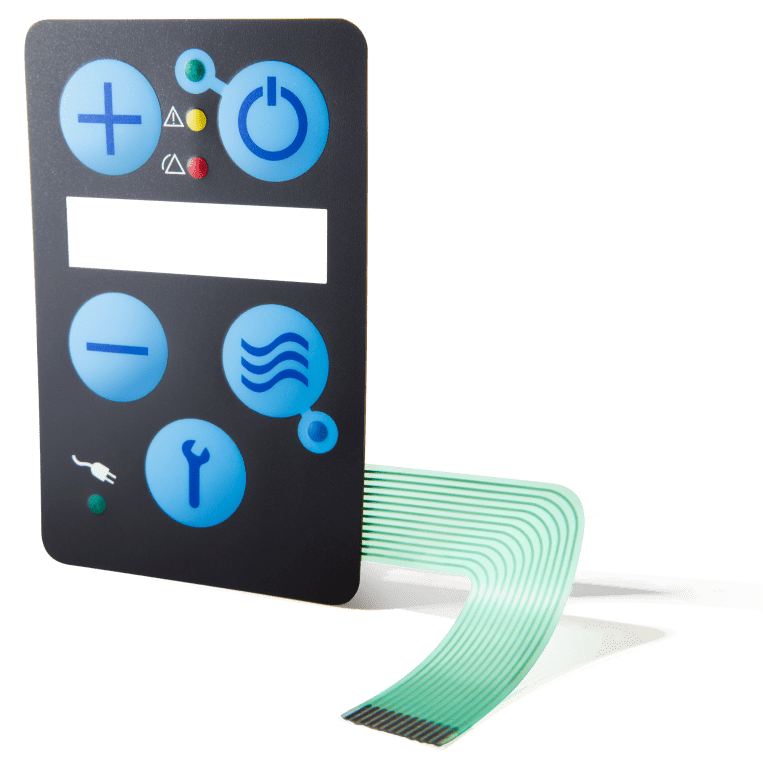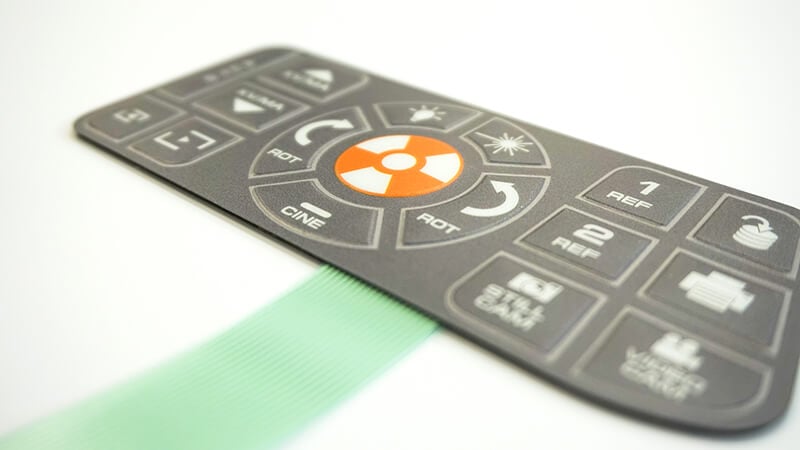Comprehending Membrane Switches Over: The Trick to Trustworthy and long lasting Controls
Membrane switches stand for an essential aspect of modern-day user interface layout, mixing functionality with durability in different applications. These versatile parts not just help with customer communication however are also crafted to stand up to the rigors of requiring settings, from medical devices to commercial machinery. Recognizing their building, operation, and the myriad benefits they use is vital for designers and engineers alike. As we discover the ins and outs of membrane buttons, it becomes clear that their duty in enhancing control systems is both complex and profound, questioning concerning how finest to take advantage of their capacities in future developments.
What Are Membrane Layer Buttons?
Membrane buttons are an innovative solution in the realm of interface modern technology, combining performance and style flawlessly. These devices act as an interface in between individuals and electronic systems, integrating several components into a small format. Usually built from adaptable, thin layers of materials, membrane switches are designed to reply to touch, allowing users to connect with equipment and digital tools properly.
The key components of a membrane switch include a printed circuit layer, graphic overlay, and a spacer layer that prevents unintended activation. The visuals overlay can be customized to reflect brand name identification or customer choices, improving visual appeals while guaranteeing usability. Membrane buttons are generally made use of in various applications, consisting of medical tools, consumer electronics, and commercial tools, owing to their resilience and resistance to environmental variables such as dampness and dust.
One of the essential advantages of membrane layer buttons is their ability to withstand damage, making them excellent for high-traffic settings. In addition, they are lightweight and require marginal space, permitting ingenious styles in product development. In general, membrane switches stand for a reliable and functional choice for modern-day electronic user interfaces, marrying technology with user-centric design principles.

How Membrane Layer Switches Work
The procedure of membrane layer changes hinges on an easy yet effective device that converts customer input into electronic signals. These buttons contain several layers, normally consisting of a graphic overlay, a spacer layer, and a circuit layer. When a customer presses the button, the top layer flaws, enabling a conductive aspect in the circuit layer to reach a corresponding conductive pad on the bottom of the visuals overlay. This contact shuts the circuit and sends a digital signal to the device, indicating that the button has been turned on.
The layout of membrane buttons can vary, yet they commonly incorporate domes or responsive elements to give comments to the individual, enhancing the overall experience. The products utilized in membrane layer buttons, such as polyester or polycarbonate, add to their toughness and resistance to environmental variables, including wetness and dust. Moreover, the printed circuits are normally encapsulated, which secures them from wear and tear gradually.

Benefits of Membrane Layer Switches
Among the main benefits of membrane buttons is their adaptability in design, allowing them to be personalized to meet details user needs and visual demands. This flexibility encompasses various markets, where various shapes, sizes, and colors can be utilized to boost individual communication and visual allure.
Additionally, membrane layer switches are recognized for their toughness. Constructed from durable products, they are resistant to dirt, moisture, and physical wear, which dramatically extends their life-span compared to conventional mechanical buttons. This resilience makes them specifically ideal for high-traffic settings and applications needing longevity.

Furthermore, membrane layer switches supply a streamlined account, resulting in a thinner layout that can be integrated right into different devices without adding mass. This function not just enhances the visual allure but additionally adds to an extra ergonomic product style.

Applications of Membrane Switches
Flexible and straightforward, membrane layer switches discover applications throughout a wide variety of industries, consisting of clinical devices, consumer electronics, and commercial tools. In the medical field, these buttons are integral to gadgets such as analysis tools, patient monitoring systems, and infusion pumps, where dependability and simplicity of cleansing are important. Their recommended you read capability to keep and hold up against extreme settings functionality makes them optimal for such applications.
In customer electronic devices, membrane layer buttons are utilized in items like microwaves, washing devices, and push-button controls - membrane switch. Their smooth layout enables instinctive interface, boosting the total user experience while offering sturdiness and resistance to use and tear
Industrial devices likewise gains from membrane buttons, especially in control panels for machinery and automation systems. These switches offer protection versus dirt and wetness, making certain regular efficiency in challenging environments. Their personalized functions permit suppliers to customize them to certain operational requirements, improving efficiency and capability.
Picking the Right Membrane Switch Over
When picking a membrane layer switch, it is crucial to think about various aspects that influence performance and viability for particular applications. The primary factors to consider include ecological problems, tactile responses, sturdiness, and layout specs.
First, assess the operating atmosphere; buttons exposed to wetness, chemicals, or severe temperatures need details materials to make sure longevity and performance. Next off, assess the requirement for responsive feedback. Depending upon customer communication, some applications might gain from a tactile action to validate activation, while others may like a non-tactile layout for visual reasons.
Toughness is another important variable; membrane switches ought to be created to hold up against constant use, impacts, and abrasion. Make sure the picked button can endure the expected lifecycle, particularly in high-usage circumstances.
Conclusion
In conclusion, membrane switches work as crucial parts in the design of trusted and sturdy their website control systems throughout various industries. Their compact design, integrated with robust construction and customizable features, enhances user communication while making certain long life in requiring settings. The adaptability of membrane layer changes enables customized options that fulfill details functional requirements, reinforcing their significance in modern-day innovation. membrane switch. As markets remain to develop, the significance of integrating reliable membrane layer switch solutions can not be overemphasized.
Membrane changes represent an essential element of modern-day user interface layout, blending capability with durability in numerous applications.Membrane buttons are a sophisticated option in the realm of customer interface innovation, incorporating functionality and style seamlessly. Normally constructed from versatile, slim layers of materials, membrane layer buttons are developed to react to touch, enabling individuals to engage with machinery and electronic gadgets properly.
The style of membrane layer buttons can vary, however they usually incorporate domes or tactile aspects to give feedback to the individual, boosting the overall experience.In conclusion, membrane changes offer as essential components in the style of durable and trusted my site control systems across different markets.